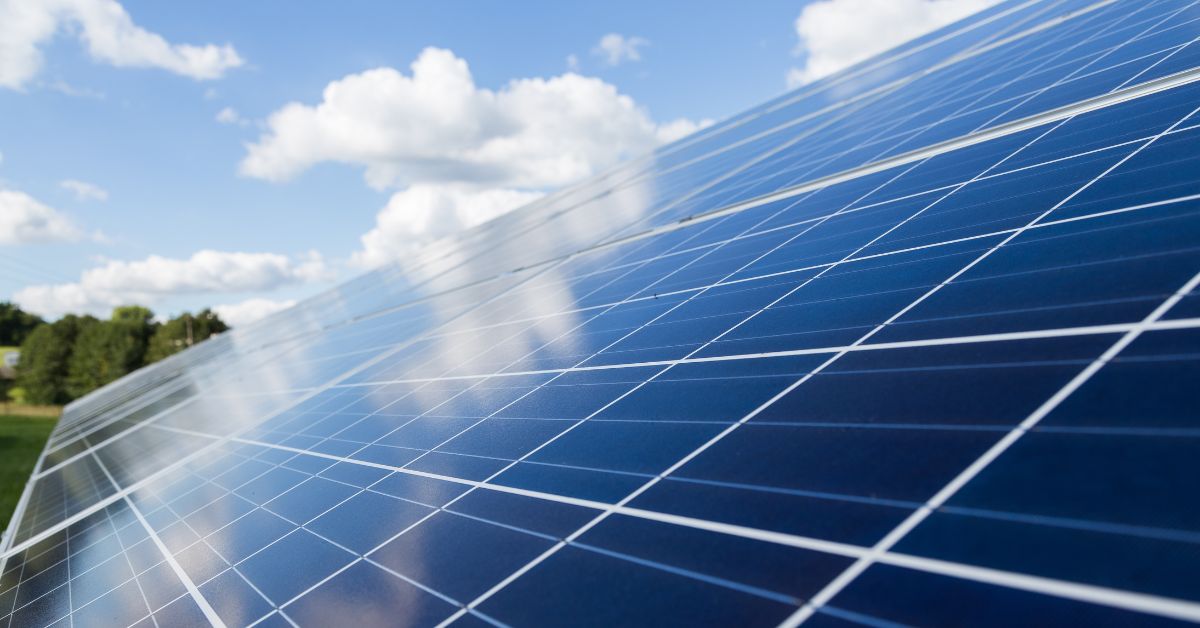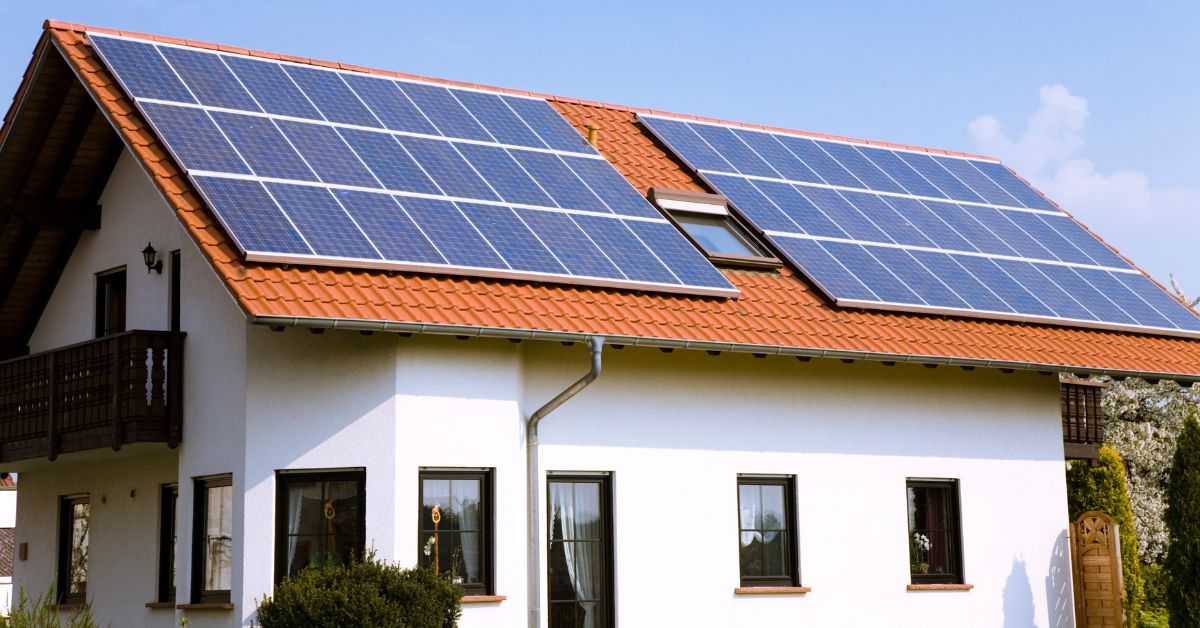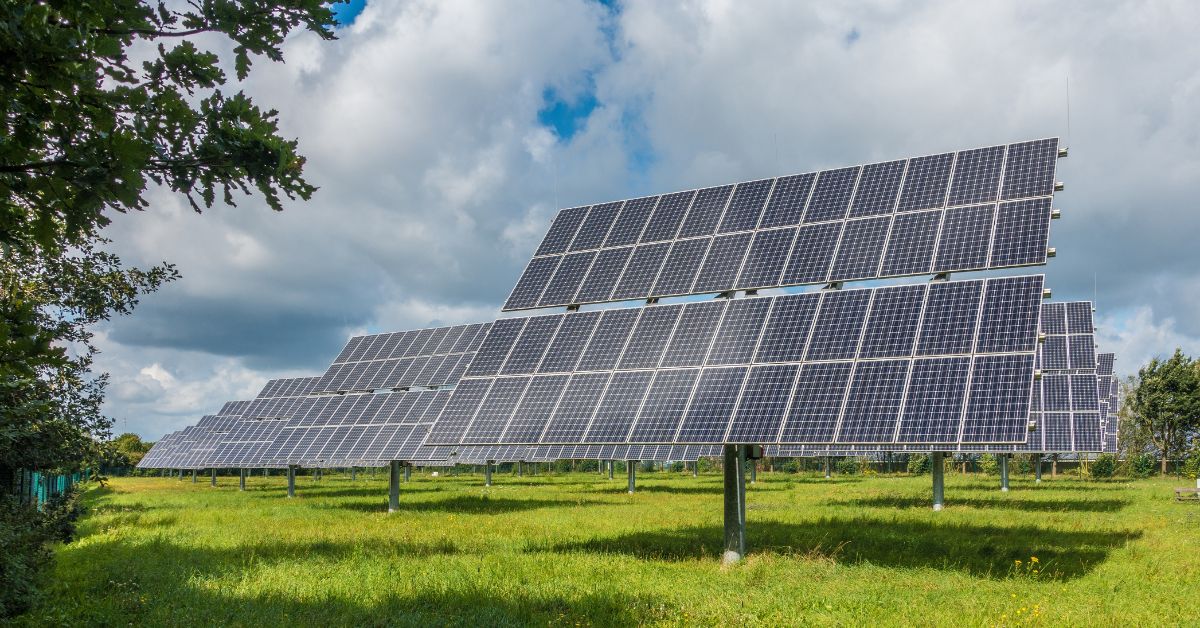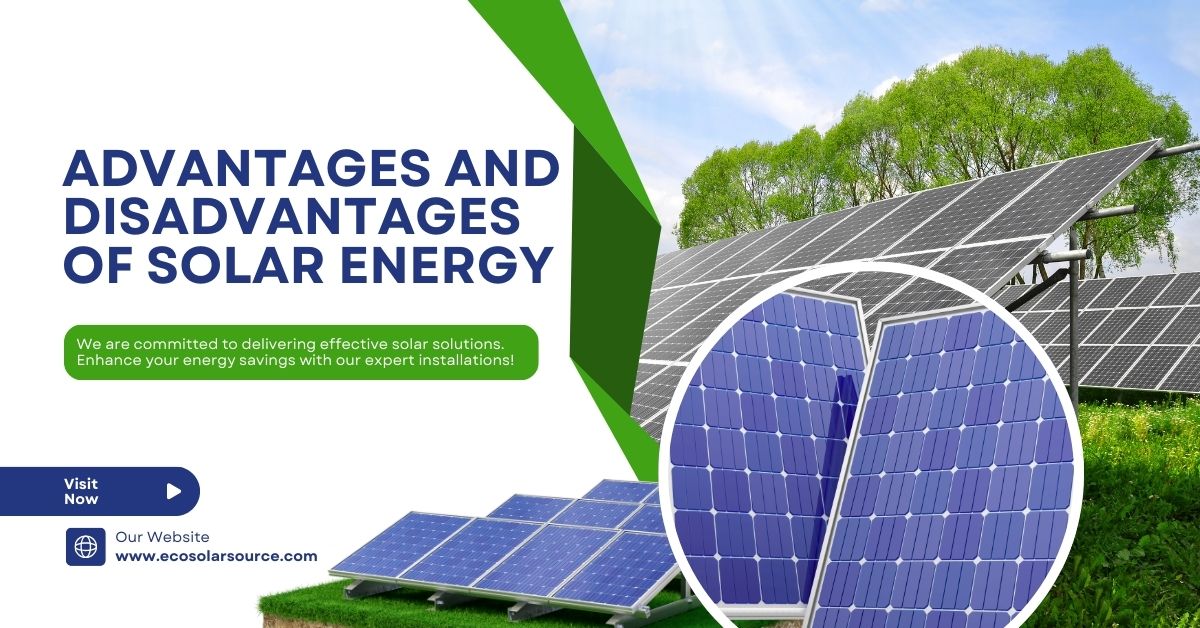Advantages and Disadvantages of Solar Energy
Know the details about the Advantages and Disadvantages of Solar Energy, Solar energy is a popular renewable energy source with significant advantages and some challenges. This article explores the key benefits, such as its eco-friendliness, sustainability, and ability to reduce electricity bills. It also examines its limitations, including high upfront costs, weather dependency, and space requirements.
By understanding both the advantages and disadvantages of solar energy, homeowners and businesses can make informed decisions about adopting this green technology. Discover how solar power can impact your energy consumption, the environment, and your financial investment in this balanced overview of solar energy’s pros and cons.
Table of Contents
Advantages and Disadvantages of Solar Energy
Solar energy has become one of the most popular alternatives to fossil fuels in recent years, offering a clean, renewable, and seemingly limitless power source. With the growing concern over climate change and the rising costs of traditional energy sources, many individuals, businesses, and governments have turned their attention to solar energy as a key player in the global energy landscape. However, while the benefits of solar energy are widely touted, significant challenges must be considered. This blog post will explore both the advantages and disadvantages of solar energy to provide a well-rounded view of its potential and limitations.
Introduction to Solar Energy
Solar energy is the process of converting sunlight into electricity, either directly using photovoltaics (PV), indirectly using concentrated solar power (CSP), or a combination of both. It is one of the cleanest and most abundant renewable energy sources available today. With advancements in technology, solar energy has become more accessible and affordable, making it a viable alternative to conventional energy sources like coal, natural gas, and oil.

Governments worldwide are increasingly adopting policies that encourage the growth of solar energy. From residential solar panels to large-scale solar farms, the solar energy sector is growing exponentially. However, as with any energy source, solar energy has its advantages and disadvantages.
How Solar Energy Works
At the heart of solar energy systems are photovoltaic cells, which convert sunlight directly into electricity. These cells are typically made from silicon and are arranged in panels that can be installed on rooftops, ground mounts, or even integrated into buildings. When sunlight hits the solar cells, it excites electrons, creating an electric current that can be used to power homes, businesses, and even entire cities.
Concentrated solar power (CSP) systems, on the other hand, use mirrors or lenses to focus sunlight onto a small area, generating heat. This heat is used to produce steam, which powers turbines to generate electricity. CSP is often used in large-scale solar farms where space is abundant.
Both methods offer unique benefits and challenges, but the growing adoption of solar energy worldwide shows a promising shift toward cleaner energy sources. Now, let’s dive deeper into the specific advantages and disadvantages of solar energy.
Advantages of Solar Energy
1. Renewable and Sustainable
Solar energy is a truly renewable energy source. As long as the sun exists, we will have access to solar energy. Unlike fossil fuels, which are finite and depleting, solar energy is available every day, virtually everywhere on Earth. Its renewable nature makes it a cornerstone of sustainable energy systems.

This sustainability is crucial as the world seeks to reduce reliance on non-renewable energy sources, which contribute to environmental degradation and are subject to volatile market prices.
2. Environmentally Friendly
One of the primary benefits of solar energy is its minimal impact on the environment compared to traditional energy sources like coal or natural gas. Solar power generation does not emit greenhouse gases, air pollutants, or other harmful byproducts, making it a cleaner alternative for reducing our carbon footprint.
Moreover, solar energy helps combat climate change by reducing reliance on fossil fuels. Since solar panels generate electricity without burning fuels, they play a role in minimizing global warming.
3. Reduces Electricity Bills
For individuals and businesses, solar energy provides the opportunity to significantly reduce or even eliminate electricity bills. Once a solar panel system is installed, the energy it produces is free. Although there are initial setup costs, over time, the cost savings can be substantial.
In some cases, homeowners and businesses may even generate more electricity than they use. Many utility companies offer net metering programs that allow solar panel owners to sell excess electricity back to the grid, further lowering their utility costs.
4. Low Maintenance Costs
Solar panels generally require very little maintenance. Once installed, they can operate efficiently for 20 to 30 years with minimal upkeep. Occasional cleaning and inspection are typically all that is needed to ensure they continue to function effectively.
Moreover, because solar panels have no moving parts, they are less prone to mechanical failures. This low maintenance cost makes solar energy a reliable and hassle-free solution for long-term energy production.
5. Energy Independence
Relying on solar energy allows individuals and countries to reduce their dependence on foreign energy sources. This is particularly important for countries that rely heavily on imported oil, coal, or natural gas. By generating their electricity, they can become more self-sufficient and less vulnerable to global energy price fluctuations and political instability.
At a residential level, solar energy provides homeowners with greater control over their energy usage and costs, especially in areas prone to frequent power outages or where electricity prices are high.
6. Job Creation
The solar energy industry has become a significant source of employment globally. From manufacturing solar panels to installing and maintaining them, the sector creates a wide range of jobs. As the demand for solar energy grows, so too does the need for skilled labor, providing economic benefits and driving job growth in many regions.
7. Diverse Applications
Solar energy can be used for various applications beyond generating electricity. It can be used to heat water, provide light, and power buildings in remote areas without access to the electricity grid. Solar-powered devices, such as solar water heaters and solar lamps, offer practical solutions to energy needs in both developed and developing regions.
In addition, solar energy can be integrated into transportation systems, such as electric vehicles (EVs) and solar-powered charging stations, further reducing our reliance on fossil fuels.
8. Technological Advancements
The solar energy industry is constantly evolving, with ongoing research and development leading to more efficient and cost-effective solar technologies. Innovations in solar panel design, energy storage, and solar tracking systems are making solar energy more accessible and appealing to a wider audience.
For example, advancements in thin-film solar cells and flexible solar panels are expanding the possibilities for how and where solar energy can be used. These technological improvements are expected to continue driving down costs and increasing the efficiency of solar energy systems in the coming years.
Disadvantages of Solar Energy
1. High Initial Costs
One of the most significant barriers to the widespread adoption of solar energy is the high upfront cost of purchasing and installing solar panels. Although prices have decreased considerably in recent years, the initial investment required can still be prohibitive for many homeowners and businesses.

These costs include purchasing the solar panels, inverters, mounting systems, and batteries (if off-grid or energy storage is required). While government incentives and tax credits can help offset these costs, the initial financial outlay remains a challenge for many potential adopters.
2. Weather Dependent
Solar energy production is directly influenced by weather conditions. Solar panels rely on sunlight to generate electricity, meaning they are less effective on cloudy or rainy days and during the night. In regions with less consistent sunlight, solar energy systems may not generate enough electricity to meet energy demands.
Although advancements in solar technology have improved efficiency under low-light conditions, solar energy remains dependent on the availability of sunlight. This makes solar energy less reliable in certain geographical areas.
3. Energy Storage is Expensive
One of the most significant challenges facing solar energy is energy storage. Because solar panels only generate electricity during daylight hours, energy must be stored for use during the night or cloudy days. Current energy storage solutions, such as lithium-ion batteries, are expensive and can significantly increase the cost of a solar energy system.
While research is ongoing to develop more affordable and efficient energy storage technologies, the high cost of storage remains a key limitation of solar energy systems, particularly for those who want to be entirely energy-independent.
4. Requires Space
Solar panels require a considerable amount of space to generate significant amounts of electricity. For residential installations, the available roof space can limit the size of the solar system and, therefore, the amount of energy it can produce. In densely populated areas or urban settings, finding enough space for solar installations can be challenging.
For large-scale solar farms, land use becomes a concern, as vast areas of land are needed to deploy enough solar panels to generate meaningful power for cities or industries. In some cases, this can lead to land-use conflicts with agriculture or conservation efforts.
5. Manufacturing Environmental Impact
While solar energy is considered an environmentally friendly power source, the production of solar panels involves certain environmental concerns. The manufacturing process requires significant energy, often from non-renewable sources, and involves the use of hazardous materials like cadmium and lead.
Furthermore, the disposal of old or damaged solar panels can create e-waste, which needs to be properly managed to avoid environmental contamination. Although these issues are minor compared to the environmental impact of fossil fuels, they are still important considerations in the overall lifecycle of solar energy systems.
6. Inconsistent Efficiency
Solar panel efficiency varies widely depending on several factors, including the type of panels used, geographic location, and weather conditions. While modern solar panels can convert sunlight into electricity at a higher rate than ever before, they are still not 100% efficient.
Most solar panels have an efficiency rating of around 15-20%, meaning that a significant amount of sunlight is not converted into usable energy. This relatively low efficiency, combined with fluctuating weather conditions, means that solar energy may not always meet energy demands.
7. Long Payback Period
While solar energy can save money in the long run, the payback period for recovering the initial investment can be quite long, often ranging from 5 to 15 years. This extended payback period can be a deterrent for individuals and businesses considering solar energy, especially in regions where electricity prices are relatively low.
The return on investment (ROI) of a solar energy system is influenced by several factors, including the cost of electricity in the area, available government incentives, and the overall cost of the solar installation. In areas with lower electricity costs, the payback period may be longer, making solar energy less appealing.
8. Intermittency Challenges
One of the inherent disadvantages of solar energy is its intermittent nature. Solar panels only generate electricity when the sun is shining, making it a non-continuous power source. This intermittency can lead to challenges in balancing energy supply and demand, particularly on a larger scale.
Without adequate energy storage or backup systems, solar energy may not be sufficient to meet peak energy demands, leading to potential shortages or the need for supplementary power from traditional energy sources. This challenge is especially relevant for utilities and grid operators, who must ensure a reliable supply of electricity at all times.
FAQs About Advantages and Disadvantages of Solar Energy
Q1. What are the primary advantages of solar energy?
Solar energy is renewable, reduces electricity bills, has low operating costs, requires minimal maintenance, and can increase property values.
Q2. What are the disadvantages of solar energy?
The main disadvantages include high initial installation costs, dependence on sunlight availability, energy storage challenges, and space requirements for solar panels.
Q3. How does solar energy contribute to environmental sustainability?
Solar energy reduces greenhouse gas emissions, decreases reliance on fossil fuels, and minimizes air pollution, contributing to a cleaner environment.
Q4. Is solar energy cost-effective in the long run?
Yes, despite high initial costs, solar energy can lead to significant savings on electricity bills over time, making it cost-effective in the long run.
Q5. What are the challenges of solar energy storage?
Solar energy storage systems, such as batteries, can be expensive, have limited capacity, and may require regular maintenance, posing challenges for reliable energy supply.
Q6. How does the efficiency of solar panels affect their advantages?
The efficiency of solar panels impacts energy production and cost savings; more efficient panels generate more electricity from the same amount of sunlight.
Q7. Can solar energy systems work in cloudy or rainy climates?
Yes, solar panels can still generate electricity on cloudy or rainy days, though their efficiency may be reduced compared to sunny conditions.
Q8. What incentives or tax credits are available for solar energy installation?
Many governments offer incentives, tax credits, and rebates for solar energy installation, which can significantly offset initial costs.
Q9. How do solar energy systems impact property value?
Homes with solar energy systems often see an increase in property value, as potential buyers appreciate the long-term energy savings and sustainability benefits.
Q10. What advancements are being made to improve solar energy technology?
Advancements in solar technology, such as higher efficiency solar cells, innovative storage solutions, and improved installation techniques, continue to enhance the viability and affordability of solar energy.
Solar energy presents a promising alternative to traditional fossil fuels, offering numerous environmental and economic benefits. Its renewable nature, low environmental impact, and potential to reduce electricity costs make it an attractive option for both individuals and governments.
However, solar energy is not without its challenges. High initial costs, weather dependency, and energy storage issues remain significant barriers to its widespread adoption. As technology continues to evolve and costs decrease, these challenges may be mitigated, making solar energy more accessible and efficient for a wider range of users.
In conclusion, while solar energy has its disadvantages, its advantages outweigh them in many cases, particularly as the world transitions toward more sustainable energy sources. The future of solar energy looks bright, but it will require continued innovation and investment to reach its full potential.
Click here to learn more about Advantages and Disadvantages of Solar Energy

